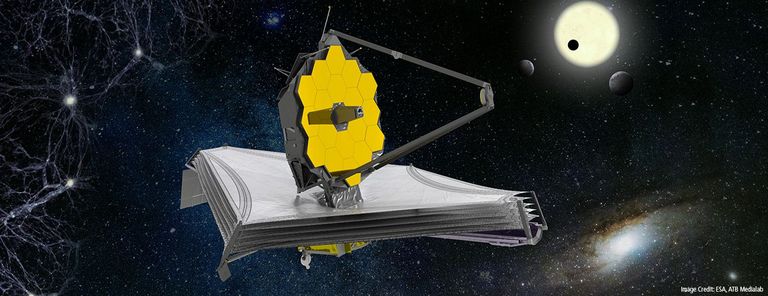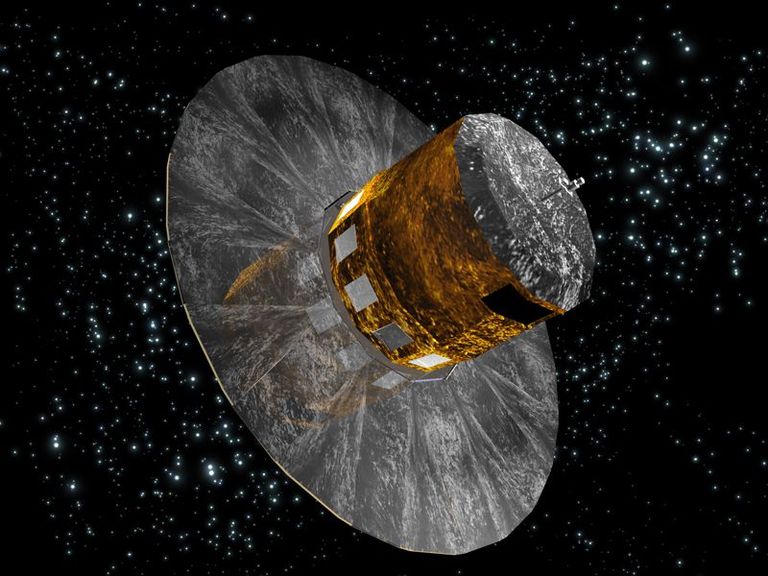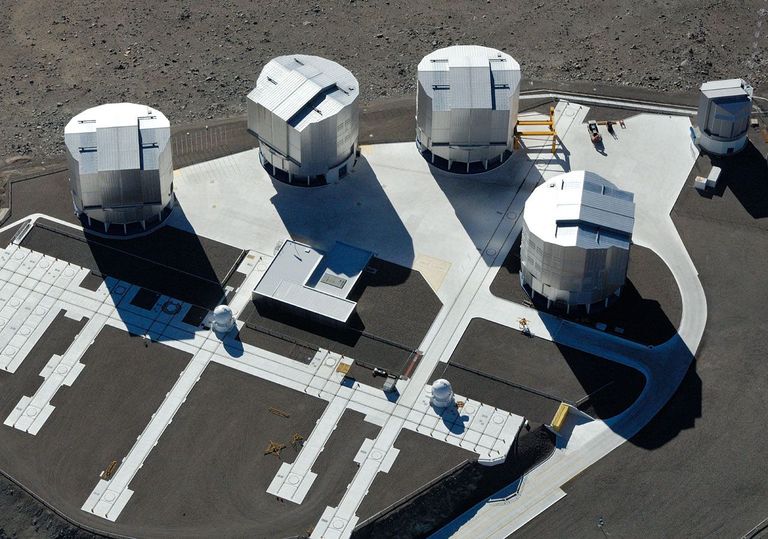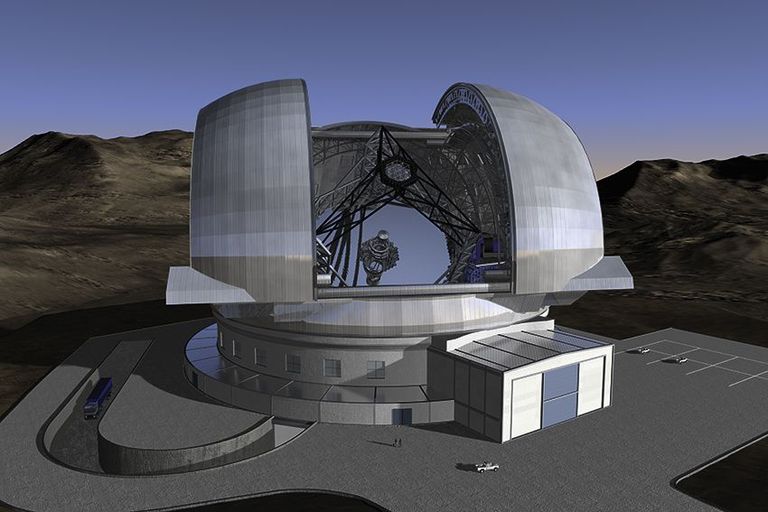Optical and Infrared Astronomy
Es folgen vier Beispiele von Beobachtungsmissionen mit Schweizer Beteiligung im optischen Bereich und im Infrarotbereich. Teleskope, die Strahlung in diesem Bereich untersuchen, können sowohl im All unterwegs sein, als auch auf der Erde stationiert sein.

James Webb Space Teleskop
Das Space Webb Space Teleskop (JWST) startete Ende 2021 ins All und kreist bis heute auf dem Lagrange-Punkt L2 um die Sonne. Es untersucht Wellenlängen zwischen 0.6 Mikrometer bis 28 Mikrometer - also im Bereich des roten sichtbaren Lichtes bis ins mittlere Infrarot.
Mit den Aufnahmen des JWST werden wir mehr über die Geschichte des Universums erfahren: Was waren die ersten leuchtenden Objekte nach dem Urknall? Wie haben sich Galaxien von ihrer Entstehung bis heute entwickelt? Wie sind die Sterne und Planeten entstanden? Wo gibt es Potential für extraterrestrisches Leben? Wie ist die Atmosphäre von Exoplaneten aufgebaut?
Das JWST ist eine Kooperation der ESA, der NASA und der CSA (Canadian Space Agency).

Gaia
Das Weltraumteleskop Gaia ist ebenfalls auf dem Lagrange-Punkt L2 unterwegs und soll vor allem leuchtende Objekte wie Sterne, Asteroiden, Exoplaneten und Galaxien vermessen, Magnitude und Farbe bestimmen und teilweise auch deren Spektren aufzeigen. Gaia hat drei Instrumente: ein Astrometer, um die Position der Objekte zu bestimmen, ein Photometer für die Farbe und ein Spektrometer, um die Radialgeschwindigkeit zu messen.
Gaia ist seit 2013 im All und die Mission sollte ursprünglich bis 2019 dauern. Sie wurde aber mehrmals verschoben und das vorläufige Ende ist nun auf 2025 festgelegt worden.

Very Large Telescope
Das Very Large Telescope (VLT) der ESO ist in der Atacamawüste in Chile stationiert und besteht aus vier Hauptteleskopen mit Spiegeln mit Durchmesser von 8.2 Metern und vier Hilfsteleskopen, deren Spiegel einen Durchmesser von 1.8 Metern hat.
Das VLT kann Beobachtungen im optischen Bereich bis zum mittleren Infrarotbereich machen.
Danke dem VLT gelang etwa das erste Bild eines Exoplaneten oder Aufnahmen von Sternen, die um das Schwarze Loch im Zentrum der Milchstrasse kreisen.

Extremely Large Telescope
Das Extremely Large Telescope (ELT) ist ebenfalls ein Projekt der ESO. Es handelt sich um ein noch grösseres auf der Erde stationiertes Teleskop als das VLT. Der Hauptspiegel wird einen Durchmesser von 39 Metern haben und aus 798 sechseckigen Spiegelelementen zusammengesetzt sein. Acht unterschiedliche Instrumente sollen den Himmel vermessen und abbilden. Das ELT befindet seit 2017 im Bau und wird nur 20 Kilometer vom VLT, ebenfalls in der Atacamawüste in Chile, stationiert sein. Den ersten Einsatz erwarten Forschende 2027.
Das ELT soll unter anderem helfen, neue Exoplaneten in der habitablen Zone zu finden und herauszufinden, woraus die Dunkle Materie besteht.

